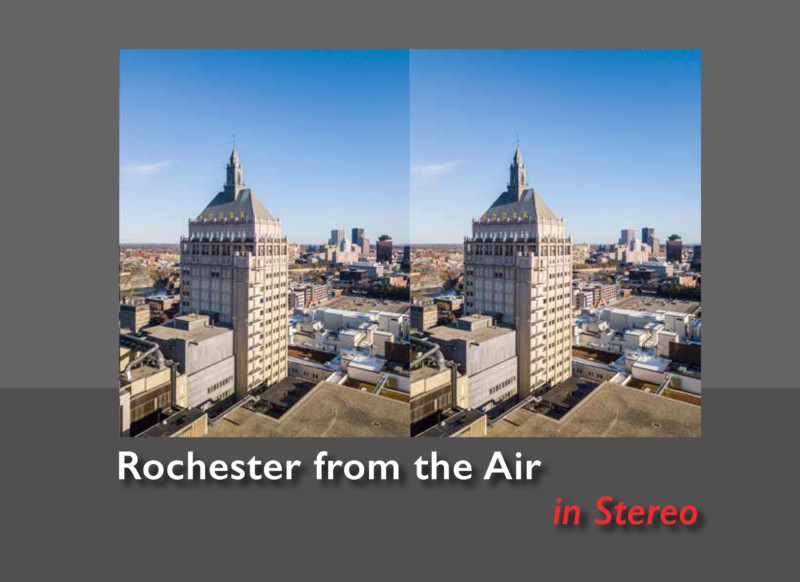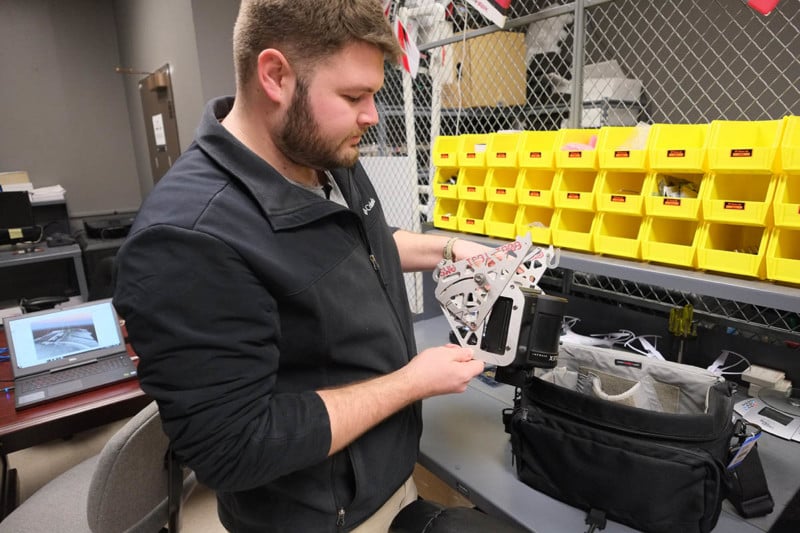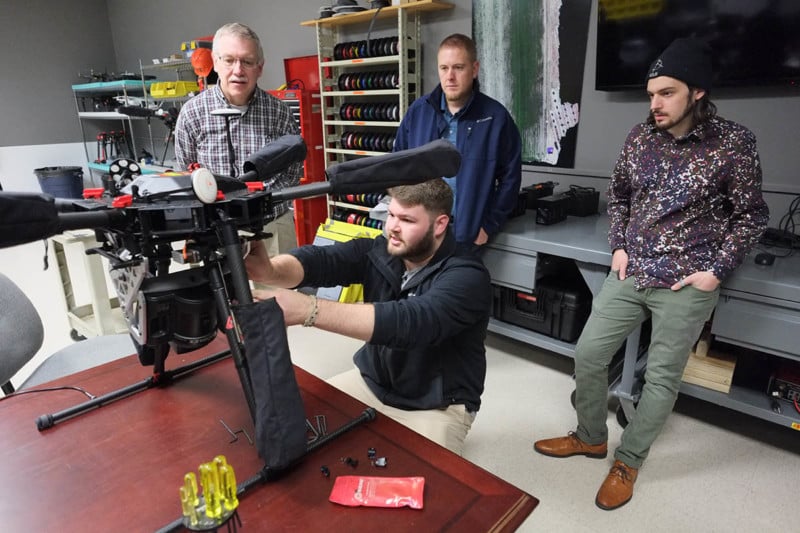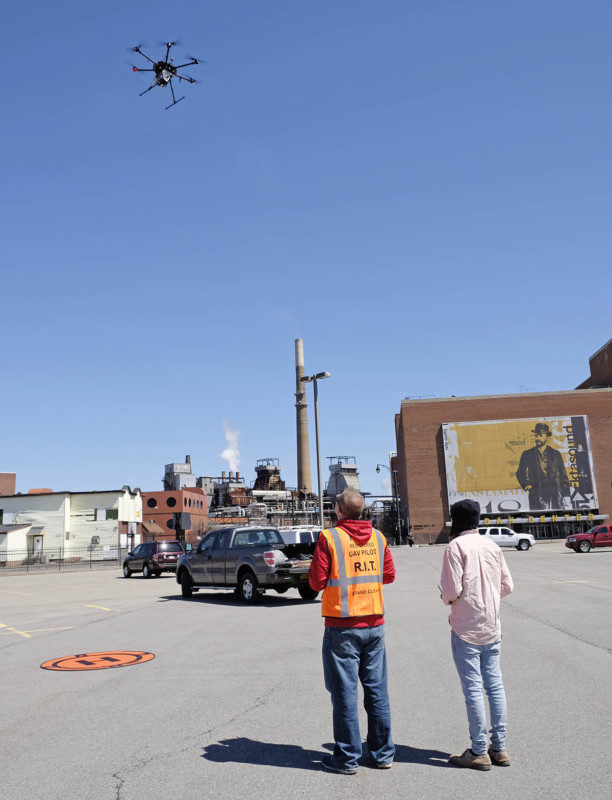A Film Panorama of Kodak Park with a Medium Format Camera Drone
![]()
As Eastman Kodak Company transforms its legendary manufacturing complex, once devoted exclusively to the production of photographic equipment and materials, the management of the Eastman Business Park reached out to me (Professor Frank Cost at RIT) to involve students in learning opportunities centered in a new customer-education and workforce development center planned for the Park.
Kodak describes the manufacturing site northwest of downtown Rochester as follows:
Eastman Business Park is a 1,200-acre R&D and manufacturing campus with over 16 million square feet of multi-scale manufacturing, distribution, lab and office space. There are currently almost 100 companies onsite employing over 6,000 people, many of them responsible for the development of our nation’s next generation technologies in the areas of Energy Storage, Chemical Manufacturing, Roll-to-Roll Manufacturing and Photonics. Additionally, the Park’s immense manufacturing infrastructure—including the private utilities and onsite water and wastewater management system—is a competitive advantage for its high-use tenants.
The first RIT aerial photographic project, completed in April 2018, combined technologies that reached their maturity during the analog age of film with a contemporary aerial camera platform and control. An RIT team including an aerial photographer from the School of Photographic Arts and Sciences, an engineer and pilot from the Digital Imaging and Remote Sensing Lab in the Carlson Center for Imaging Science, and a mechanical engineering student from the Kate Gleason College of Engineering, designed a system for lofting a Noblex 150HS medium format panoramic camera shooting 800 ISO Kodak Portra film.
With this unmanned aerial photographic system, they created the first of a series of large-scale panoramic images which was displayed for the first time in a gallery presentation at the 2018 Imagine RIT Innovation and Creativity Festival on April 28. These panoramic images will become a permanent part of the historic record, celebrating the long history of Eastman (Kodak) Business Park as a world-renowned center of analog photography, and pointing to what is hoped will be a glorious future for the site, and for Rochester.
The idea for this project originated during the fall semester 2017 in my course in aerial photography and videography at RIT. We used DJI Mavic Pro drones as the camera platforms. After a semester of work, the class had created enough exciting new photographic content for two new books of photographs of Rochester from the Air. One book contains panoramic images created from up to 12 overlapping multiple frames captured from the Mavic drone shooting in portrait mode. The other book contains stereo image pairs and comes packaged with a folding stereo viewer.
![]()
One of the students in the class, Justin Scalera, created the pictures featured on the covers of both books, as well as several of the pictures inside each one. At the end of the semester, Justin proposed a project for spring semester to try to design a system for taking medium format panoramic film photographs from a drone. Because he had produced such excellent work during the fall semester, I said “OK” before quite realizing what it would entail.

Fortunately, we were able to find partners in the Chester Carlson Center for Imaging Science and College of Engineering to solve the problem collaboratively. We used a DJI Matrice 600 hex-rotor drone capable of lofting the heavy Noblex camera and control mechanism.
Scott Bell, a mechanical engineering senior, designed and fabricated an aluminum mount and shutter release mechanism for the camera.

Tim Bauch, development engineer and drone pilot in the Digital Imaging and Remote Sensing Lab in the Center for Imaging Science, integrated a shutter control mechanism and mounted a digital preview camera looking through the optical viewfinder of the Noblex. This gave Justin, the photographer, a rough idea of what the camera would record with each exposure.


The Noblex camera requires manual film winding, so each exposure required a separate flight. Here’s a video of one of the flights made on Monday, April 23.

About the author: Frank Cost is the current James E. McGhee Distinguished Professor in the School of Photography at Rochester Institute of Technology. The professorship was created in the late 1960s by the photographic industry, led by the Photo Marketing Association and Eastman Kodak Company, to study emerging trends in consumer photography and prepare graduates to become innovators in the industry. That mission continues to the present day, although the leading industry players in consumer imaging are almost completely different from the original founders of the professorship. Cost has been photographing professionally since 1975, and has authored both textbooks and experimental photobooks exploring new forms of graphic expression enabled by digital technologies. He has taught a wide variety of courses in the field of visual media for more than three decades. You can find examples of Cost’s work here.